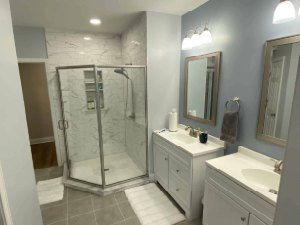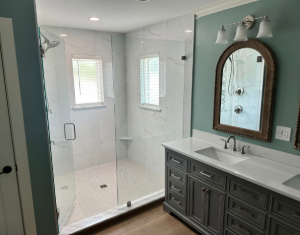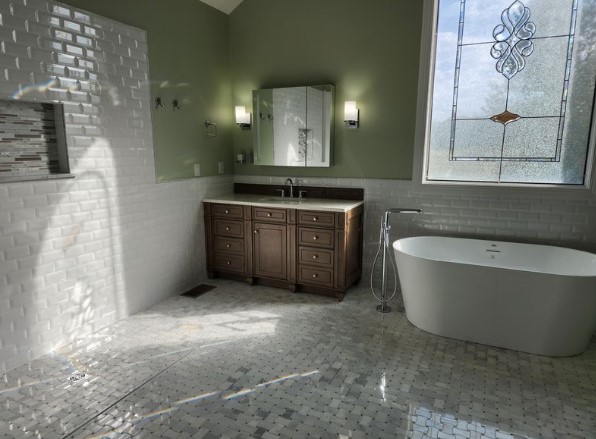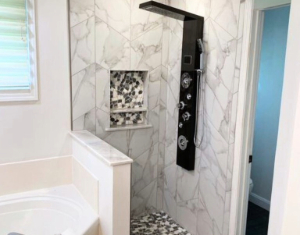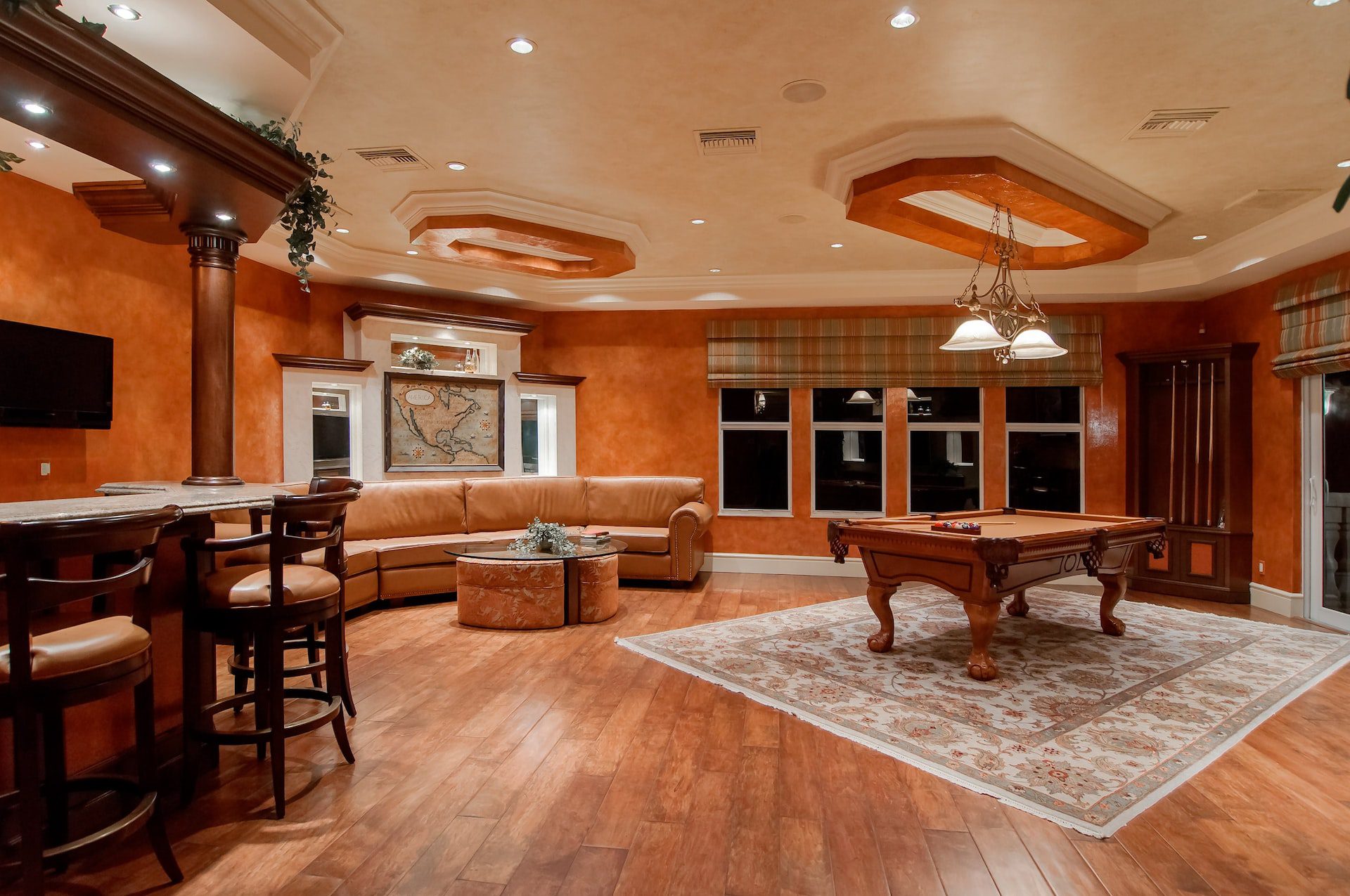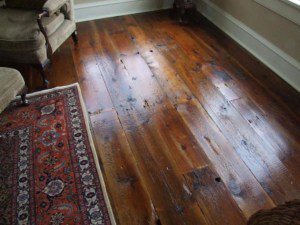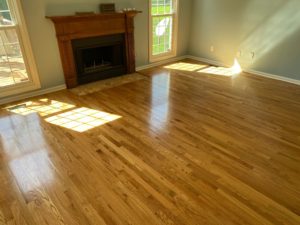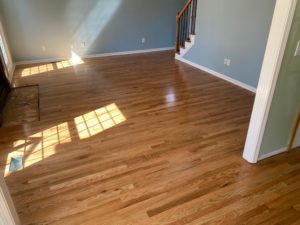There are more beautiful, long lasting flooring options today than ever before. Plus plenty of gorgeous budget options that still last for years. It’s hard to decide what works best for you, but if you’re here, you have chosen the classic. The grand champion of flooring beauty since the beginning of time. Hardwood. You’re a sophisticated homeowner who wants a gorgeous floor that lasts a lifetime. And you want to learn how to install it yourself. We’re here to help. A successful hardwood flooring installation requires careful planning, attention to detail, and the right tools and techniques. This comprehensive guide will provide you with all the information you need to successfully install hardwood flooring, from selecting the right type of hardwood to preparing your subfloor, and finally, laying and finishing your new floor. Whether you are a seasoned DIYer or a beginner, this guide will help you achieve a beautiful and long-lasting hardwood floor that will enhance the look and feel of your home for years to come.
Which Hardwood Flooring is For You?
Solid Versus Engineered
When it comes to hardwood flooring, there are two primary options: solid hardwood and engineered hardwood. Solid hardwood is made from a single piece of wood and is the traditional choice for hardwood flooring. It is durable and can be sanded and refinished multiple times, making it an excellent long-term investment. However, solid hardwood is also sensitive to changes in temperature and humidity, which can cause it to expand or contract and potentially warp or crack.
Engineered hardwood, on the other hand, is made of a thin layer of real wood veneer on top of several layers of plywood or high-density fiberboard. This layered construction makes it less susceptible to temperature and humidity changes, and it can be a good option for areas with higher moisture levels, such as basements or bathrooms. Engineered hardwood can also be more affordable than solid hardwood, and its click-and-lock installation system makes it a popular choice for DIYers.
Solid Hardwood Flooring Options
Choosing the right hardwood for your flooring is an essential first step in the installation process. There are several factors to consider when selecting hardwood, such as the species, grade, width, and finish. The species of hardwood you choose will affect the color, grain pattern, and durability of your flooring. Common hardwood species include oak, maple, cherry, hickory, and walnut, each with its unique characteristics and advantages. The grade of the hardwood refers to the quality and consistency of the wood, with select grade being the most uniform and clear grade having more knots and imperfections. The width of the planks you choose will affect the overall look of your floor. Wider planks create a more rustic feel. Finally, the finish you choose will determine the sheen and protection of your hardwood floor. Whether you choose a natural oil finish, a clear coat, or a colored stain, it’s essential to select a finish that suits your style and needs. By considering all these factors, you can choose the hardwood that best fits your needs.
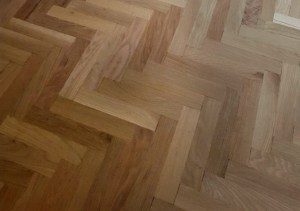
Yes, even eco-friendly hardwood can be sourced.
Factory Finished or Finished On Site?
When it comes to choosing a finish for your hardwood flooring, you have two primary options: factory finished or finished on site. Prefinished hardwood flooring comes from the factory with a finished surface, meaning that the stain and topcoat have already been applied. This type of flooring offers a consistent finish and can be less time-consuming to install, as there is no need for sanding or finishing on site. Prefinished hardwood flooring is also often more durable, as it undergoes a factory-applied finishing process that includes multiple coats of durable finish.
Finished on site hardwood flooring, on the other hand, is installed as raw, unfinished hardwood planks. After installation, the planks are sanded and finished on site, allowing for more customization and the ability to match the exact color of your existing decor. Finished on site hardwood flooring is also a good choice if you have specific requirements for the type of finish or if you’re looking for a more natural, authentic look.
Which Finish?
When it comes to choosing a finish for your hardwood flooring, there are several options available, each with its advantages and disadvantages. The three most common types of finishes are oil-based, water-based, and acid-cured.
Oil-based finishes are the most traditional type of hardwood finish and provide a warm, amber hue that deepens over time. They are easy to apply, penetrate the wood for a deep, rich color, and are relatively affordable. However, they are also slower to dry and can emit strong fumes during application, making proper ventilation essential.
Water-based finishes are a newer option that dries quickly and has a clear, non-yellowing appearance. They are low in odor and emit fewer volatile organic compounds (VOCs) than oil-based finishes, making them a more environmentally friendly choice. They are also easy to clean and maintain, and their clear finish allows the natural beauty of the wood to shine through. However, water-based finishes can be more expensive and require more coats to achieve the desired look.
Acid-cured finishes are a more durable and long-lasting option, ideal for high-traffic areas. They have a clear finish and a faster drying time than oil-based finishes, with a hard, durable surface that is resistant to scratches and wear. However, they can be more challenging to apply and require specialized tools and techniques, making them a less popular choice among DIYers.
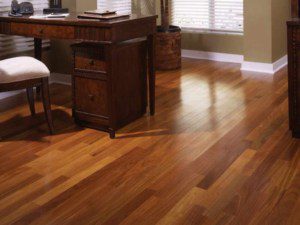
What About Grain Patterns?
When selecting hardwood flooring, the grain pattern is an consideration. The grain pattern of the wood affects the overall appearance and style of the flooring, and different patterns can create different visual effects.
The most common grain patterns are plain-sawn, quarter-sawn, and rift-sawn. Plain-sawn is the most common and affordable type of hardwood flooring, with a traditional and recognizable pattern that showcases the unique character of the wood. It has an undulating grain pattern with varying amounts of knots and swirls. It is a good choice if you’re looking for a warm and inviting feel, as it creates a more traditional look.
Quarter-sawn hardwood flooring has a unique and elegant look, with a straight grain pattern that creates a more uniform appearance. It is less common than plain-sawn and can be more expensive, but it is also more stable and durable due to the way it is cut.
Rift-sawn hardwood flooring is the most expensive type of grain pattern and has a distinct and uniform look with no visible medullary rays. The flooring is cut at a slight angle to the log, producing straight lines and a more modern, sleek appearance. It is an excellent choice for contemporary or modern interiors.
Plank Width
When selecting hardwood flooring, another important consideration is the plank width. The width of the planks can have a significant impact on the overall look and feel of the flooring. Here are some factors to consider when determining the plank width:
Room size: The size of the room can affect the choice of plank width. Wide planks are often better suited for larger rooms, as they create an expansive and spacious feel. Smaller rooms can benefit from narrower planks, which can make the space feel more proportionate.
Style: The style of the home can also influence the plank width. For a more traditional or rustic look, wider planks are often preferred. Narrower planks are better suited for modern or contemporary interiors. They create a more streamlined and sleek appearance.
Wood type: The type of wood used for the flooring can also impact the plank width. Some woods, such as oak, are naturally better suited for wider planks, while others, such as maple, are more suitable for narrower planks.
Personal preference: Ultimately, the plank width is a matter of personal preference. Some homeowners prefer the look of wider planks, while others prefer narrower ones. It’s essential to choose a plank width that fits your style and taste, as you will be living with the flooring for many years.
When determining the plank width, it’s also important to consider the installation method. Wider planks may require more skill to install, and the subfloor may need additional support. Consult with a flooring professional to determine which plank width is best suited for your specific needs and style.
Installing Hardwood Flooring
What Will You Need?
Installing hardwood flooring is a significant investment that can add value and beauty to your home. While the installation process can be time-consuming and labor-intensive, with the right tools and materials, you can achieve a quality installation.
Tools:
- Flooring nailer
- Hammer and nails (if using a traditional nail-down installation method)
- Table saw or circular saw
- Miter saw
- Jigsaw or coping saw
- Pry bar
- Chalk line
- Tape measure
- Speed square
- Carpenter’s pencil
- Drill with screwdriver bits
- Spacers
Materials:
- Hardwood flooring
- Underlayment (if required by the manufacturer)
- Moisture barrier (if necessary)
- Flooring adhesive (if using a glue-down installation method)
- Flooring nails (if using a traditional nail-down installation method)
- Stain or finish (if applying on site)
- Transition strips
Don’t Forget to Let Your Hardwood Flooring Acclimate
It is absolutely crucial that you let the flooring acclimate to the environment in which it will be installed. This helps to prevent the flooring from expanding, contracting, or warping after installation. Here are some tips for acclimating hardwood flooring:
- Timing: Hardwood flooring should be acclimated for at least 72 hours before installation. This allows the flooring to adjust to the temperature and humidity of the installation environment.
- Storage: Store the flooring in the room where it will be installed. This allows the flooring to adjust to the temperature and humidity of the room.
- Conditions: The room where the flooring will be installed should be at a consistent temperature and humidity level. It’s recommended that the temperature be between 60-80°F and the humidity between 35-55%.
- Preparation: Leave the flooring in its packaging , but open them up, and elevate them off of the ground. This is usually done on pallets.
Acclimating the flooring is an essential step in the installation process, and it can help prevent potential issues down the line. Failure to allow the flooring to acclimate can result in gaps, buckling, or other problems. Be sure to follow the manufacturer’s recommendations for acclimation.
Installation Methods For Hardwood Flooring
There are several methods for installing hardwood flooring, and the method you choose will depend on several factors, including the type of flooring, subfloor, and personal preference. Here are the most common installation methods:
- Nail-down: This is the traditional method of installing hardwood flooring. It involves nailing the flooring directly to the subfloor using a flooring nailer or a hammer and nails. This method is best suited for solid hardwood flooring and requires a plywood or OSB subfloor.
- Glue-down: This method involves gluing the flooring directly to the subfloor using a flooring adhesive. It’s best suited for engineered hardwood flooring and concrete or plywood subfloors. Glue-down installation can provide a more stable and secure installation and can be a better option for areas with high humidity.
- Floating: This method involves installing the flooring over an underlayment or foam pad, which is then installed over the subfloor. The planks are not attached to the subfloor but rather connected to each other using a tongue and groove system. This method is best suited for engineered hardwood flooring and can be installed over concrete, plywood, or existing flooring.
How to Get the Room Ready for Hardwood Flooring Installation
Properly preparing your space is a critical step in ensuring a successful installation. Here are some tips to help you prepare your space:
- Remove Furniture: Clear the room of all furniture and other items that might get in the way of the installation process. This includes any area rugs, curtains, and window treatments.
- Remove Existing Flooring: If you have existing flooring, it needs to be removed before installing hardwood flooring. This includes any carpet, vinyl, or other flooring materials.
- Check Subfloor: The subfloor needs to be clean and level before installation. Check for any unevenness, cracks, or damage. Repair or replace any subflooring that is damaged. Level the subfloor.
- Moisture Testing: It’s important to test the subfloor and surrounding areas for moisture. High levels of moisture can cause damage to the hardwood flooring. Make sure the moisture levels are within the manufacturer’s recommended range.
- Door Clearance: Make sure that doors in the room have enough clearance for the new flooring. You may need to adjust or trim the doors for clearance.
- Baseboard and Trim: Remove the baseboard and trim from the room before installing the hardwood flooring. This will allow you to install the flooring properly and ensure a clean finish. Reinstall the baseboard after the flooring is complete.
Finishing Up
Once the hardwood flooring has been installed, there are a few final steps to ensure a beautiful and long-lasting result:
- Clean Up: Pick up, sweep, and use a shop vac to clean up any debris and dust from the installation process. If you bought factory finished hardwood, you’re done. If you are finishing on site, you have a few more steps to go.
- Acclimation: Allow the hardwood flooring to acclimate to the room for another 72 hours before sanding and finishing.
- Sanding: Sand the hardwood flooring to create a smooth and even surface. This step is essential for removing any rough spots, gaps, or imperfections.
- Staining: If you want to add color to the hardwood flooring, you can stain it to achieve the desired look.
- Sealing: Once the stain has dried, seal the hardwood flooring with a polyurethane sealant. This will protect the wood from moisture and wear and tear.
- Drying: Allow the sealant to dry completely before using the space. This can take several days, depending on the type of sealant and the humidity in the room. Be sure that the space is properly ventilated.
There are a lot of considerations and tasks involved in a DIY hardwood flooring installation, and we hope that this guide will help your floors turn out wonderfully. If you’re not feeling up to the task, and want to call in the professionals, contact us for a free evaluation.

